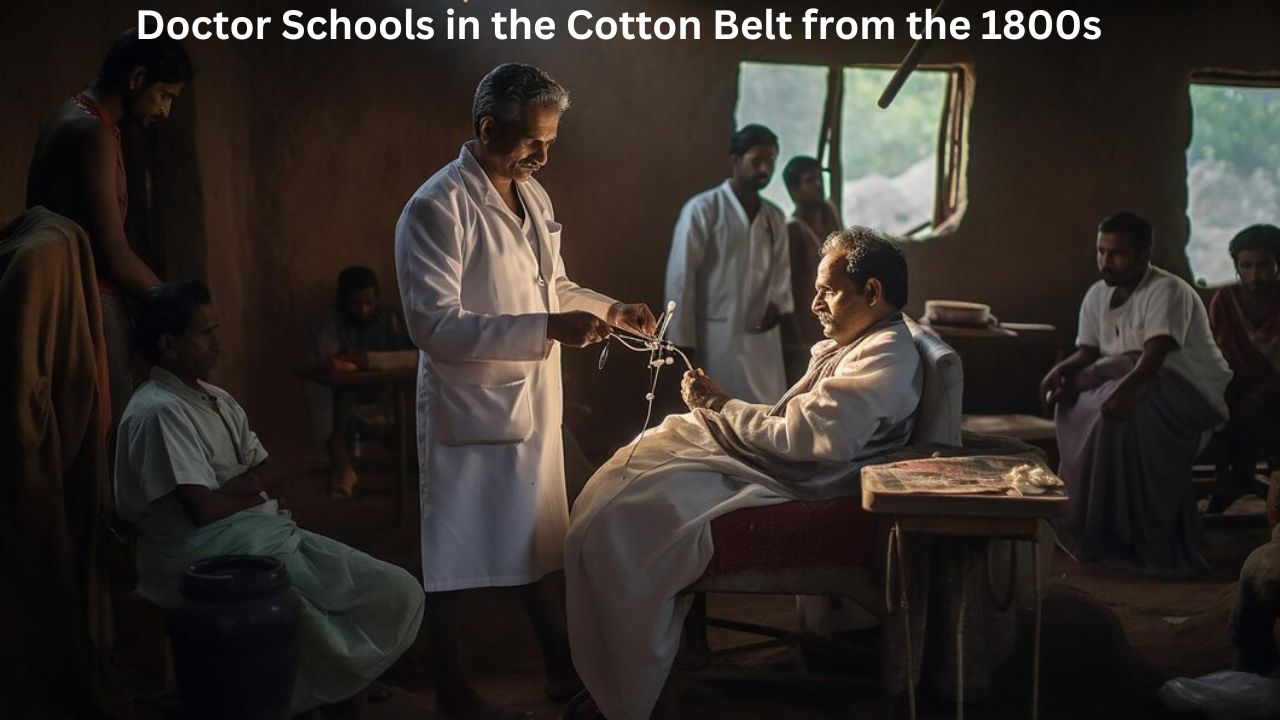The doctor schools in the Cotton Belt from the 1800s shaped medical education during a transformative period in American history. These institutions trained physicians in a rapidly changing society. Medical advancements, agricultural expansion, and economic shifts influenced their development. Many schools faced obstacles, yet they contributed significantly to healthcare in rural communities.
Medical Education in the 1800s: An Evolving Landscape
Medical training in the 1800s lacked the structure of modern education. Aspiring doctors learned through apprenticeships and informal study. Many students sought formal training in independent medical schools scattered across the South. These schools offered limited resources but played a crucial role in training physicians for the region.
The Cotton Belt’s Influence on Medical Training
The Cotton Belt, known for its agricultural economy, had unique medical needs. Southern doctors often treated plantation workers, farmers, and enslaved people. Medical schools focused on practical training for rural healthcare challenges. They emphasized hands-on learning, making students adept at treating common diseases.
Notable Doctor Schools in the Cotton Belt from the 1800s
Several medical schools emerged across the Cotton Belt to meet the demand for trained physicians. These institutions varied in curriculum, reputation, and longevity.
1. Medical College of South Carolina (1824)
Charleston became a hub for medical education, attracting students from across the South. The school prioritized clinical experience in hospitals.
2. University of Louisiana Medical Department (1834)
This institution, now Tulane University, trained doctors using a combination of European and American medical practices. The program prepared students for diverse medical environments.
3. Memphis Medical College (1856)
Located in Tennessee, this school addressed the region’s healthcare demands. Students learned surgical techniques and general medicine for rural populations.
4. Atlanta Medical College (1854)
This school later became Emory University School of Medicine. Its curriculum adapted to changing medical advancements while maintaining Southern traditions.
Challenges Faced by Doctor Schools in the Cotton Belt
Medical schools in the 1800s faced financial struggles, political instability, and inconsistent academic standards. Many institutions operated without regulation, leading to varied levels of education. Rural locations limited access to advanced medical equipment and research opportunities.
The Role of Apprenticeships in Medical Training
Formal education was not always accessible, so many aspiring doctors trained under experienced physicians. Apprenticeships provided hands-on experience but lacked standardized instruction. Some students attended medical school after apprenticeships, refining their skills in formal settings.
Impact of War on Medical Schools
The Civil War disrupted education, forcing some medical schools to close temporarily. Many students and faculty served as battlefield doctors. Wartime experiences influenced post-war medical education, leading to curriculum improvements.
Medical Practices Taught in Doctor Schools
Doctor schools in the Cotton Belt from the 1800s focused on practical skills over theoretical knowledge. Students studied anatomy, surgery, and common diseases. Rural doctors needed to handle various medical situations, including childbirth, infections, and injuries.
Women and Minorities in Medical Education
Most medical schools in the 1800s did not admit women or African Americans. Some individuals sought education in Northern institutions or abroad. Later, specific schools for minorities emerged, creating more opportunities for diverse medical professionals.
The Evolution of Southern Medical Education
By the late 1800s, medical education improved with stricter requirements and standardized training. The American Medical Association influenced curriculum development, ensuring better medical practices. Southern schools gradually adopted these reforms, enhancing the quality of medical training.
Legacy of Doctor Schools in the Cotton Belt
Many early medical schools closed, but their impact remains. They laid the foundation for modern medical institutions in the South. Their emphasis on practical training shaped the future of rural healthcare.
Conclusion
Doctor schools in the Cotton Belt from the 1800s played a crucial role in American medical history. These institutions provided essential training for physicians who served Southern communities. Despite challenges, they contributed to the development of healthcare in the region. Their legacy continues through modern medical schools that evolved from their foundations.
